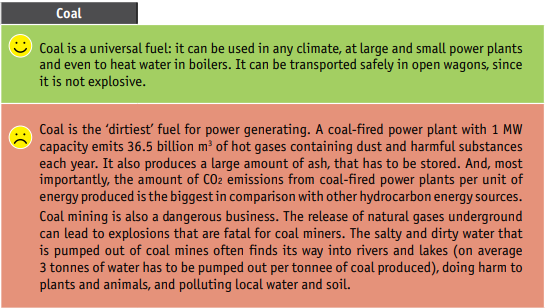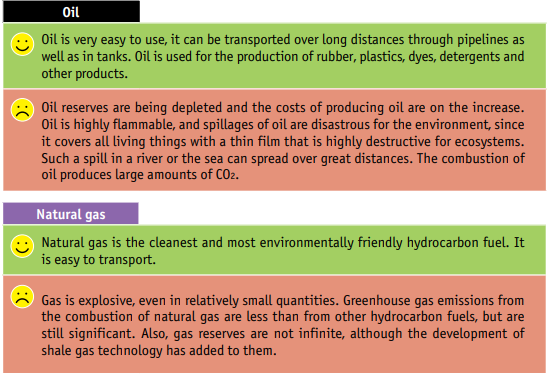
Now that we have learned what different sources of energy there are, we want to know which of them is the best? Which are the most environmentally friendly? Which are least harmful for the climate? And which are the cheapest?
Every year the world produces and uses or destroys about 170 billion tonnes of primary biomass
The answers to these questions are not as simple as might seem at first glance. We have to consider a lot of factors when we compare different fuels. It makes no sense to discuss the efficiency of technology and the cost of energy in isolation from issues of climate change, the environment and health. So, before making a decision about what kind of power stations need to be built and operated, a wide variety of assessments (technical, economic, environmental, etc.) need to be carried out. Let’s recall and compare the advantages and disadvantages of the main natural sources of energy once again.






If renewable energy is inexhaustible and environmentally friendly, why not change over completely from coal, oil, gas and nuclear power to green technologies? The fact is that limitations still exist to the mass development of renewable energy. The operation of power plants using renewable energy sources depends on climate conditions (wind strength, the presence of rivers, the number of sunny days), and there are no universal calculations for their operation that can be worked out once and for all. Every renewable generating plant will have its own peculiarities. So the successful use of renewable sources requires a huge investment of effort and money at the time of their design and construction. Nevertheless, new technologies are steadily making energy production from renewable sources more efficient and driving down the cost of producing that energy.
Energy is always in demand, so the energy industry, particularly the production and trade in oil, gas and coal, is very profitable. The amounts of money in this industry are very large, and that results in frequent and serious disagreements between government, business and environmental civil society organizations. This problem exists in all countries of the world, but, if we look at the long-term trends, we can see that people everywhere are moving towards an understanding of the changes, which have to be made for the future of humanity and of the planet. The
introduction of new, climate-friendly technologies, is delayed by the inertia of human thinking. Our planet and the universe are ready to give us their energy, but in return we must learn to use natural resources in a way that helps the climate, and does not destroy it for the sake of short-term benefits!
Questions
1. What sources of energy were used in ancient times?
2. What ways do you know of using solar panels?
3. List all of the factors you know that must be taken into account if we are to determine the total cost of generating electricity from one or other source of energy.
4. Electric engines do not produce harmful emissions. So can we consider them to be the most environmentally friendly type of engine?
5. Flat solar cells are installed on the roofs of houses at an angle to the horizon equal to the latitude of the place where they are installed. Why do you think that is?
Tasks
Task 1. Experiment
Purpose of the experiment: to built a light using renewable energy.
Materials: a transparent plastic bottle with water in it, a small table, blankets. The experiment. Cover the table with blankets so that no light can penetrate into the little ‘house’ you have created under the table. Take the bottle of water and go right inside the little house. Push the bottle into the gap between the blankets. You now have a light bulb that lights up your dark house. A transparent plastic ruler, sandwiched between the palms of your hands, would give the same effect.
Task 2. Divide into groups by different ways of producing electricity. Each group should prepare a report to defend its way of producing energy, including information about problems associated with all of the other ways. Then prepare and hold a discussion about the benefits and harm caused by different types of power generating plants,
making it relevant to the area where you live.
